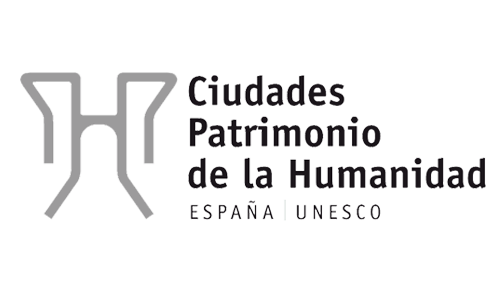Co-cathedral of Santa Maria




The oldest building of them all is the Co-cathedral of Santa Maria la Mayor. The find of some Visigothic pieces suggests that this is the place where the famous main cathedral of Santa Maria of Jerusalem stood, with its baptistery, the Episcopal palace and the atrium that connected them. The truth is that, once the city was re-conquered, a chapel was built here which was progressively extended. Today it is an example of archaic Gothic, meaning it is a very solid and squat temple with simple pinnacles in the chevet. Inside there are three naves. The one in the middle is the widest one, with slightly pointed arches, all covered with groin vaults which replaced the old wooden Mudejar framework in the 17th century. Only some of the chapels, and especially, the main chapel and the sacristy preserve arches with Gothic characteristics. The walls of the church originally had paintings on them, as we can see in a fragment which is still preserved and that shows the Saint Gregory mass.
The chapels belonged to the noblest families of the city. Until the mid 14th century, the church was a burial place for the noblemen in town. That is why we can see the tombs of Diego de Vera y Figueroa and his wife Marina Gómez de Figueroa in the main chapel and the sacristy. In the main chapel we can see the image of Christ, a moving late-Gothic Christ which is the main image of the local penance brotherhoods. It is placed where the tomb of Leonora of Austria, sister of Charles 5th, queen of Portugal and France, used to be.




The oldest building of them all is the Co-cathedral of Santa Maria la Mayor. The find of some Visigothic pieces suggests that this is the place where the famous main cathedral of Santa Maria of Jerusalem stood, with its baptistery, the Episcopal palace and the atrium that connected them. The truth is that, once the city was re-conquered, a chapel was built here which was progressively extended. Today it is an example of archaic Gothic, meaning it is a very solid and squat temple with simple pinnacles in the chevet. Inside there are three naves. The one in the middle is the widest one, with slightly pointed arches, all covered with groin vaults which replaced the old wooden Mudejar framework in the 17th century. Only some of the chapels, and especially, the main chapel and the sacristy preserve arches with Gothic characteristics. The walls of the church originally had paintings on them, as we can see in a fragment which is still preserved and that shows the Saint Gregory mass.
The chapels belonged to the noblest families of the city. Until the mid 14th century, the church was a burial place for the noblemen in town. That is why we can see the tombs of Diego de Vera y Figueroa and his wife Marina Gómez de Figueroa in the main chapel and the sacristy. In the main chapel we can see the image of Christ, a moving late-Gothic Christ which is the main image of the local penance brotherhoods. It is placed where the tomb of Leonora of Austria, sister of Charles 5th, queen of Portugal and France, used to be.
Hours and Fees
Location





